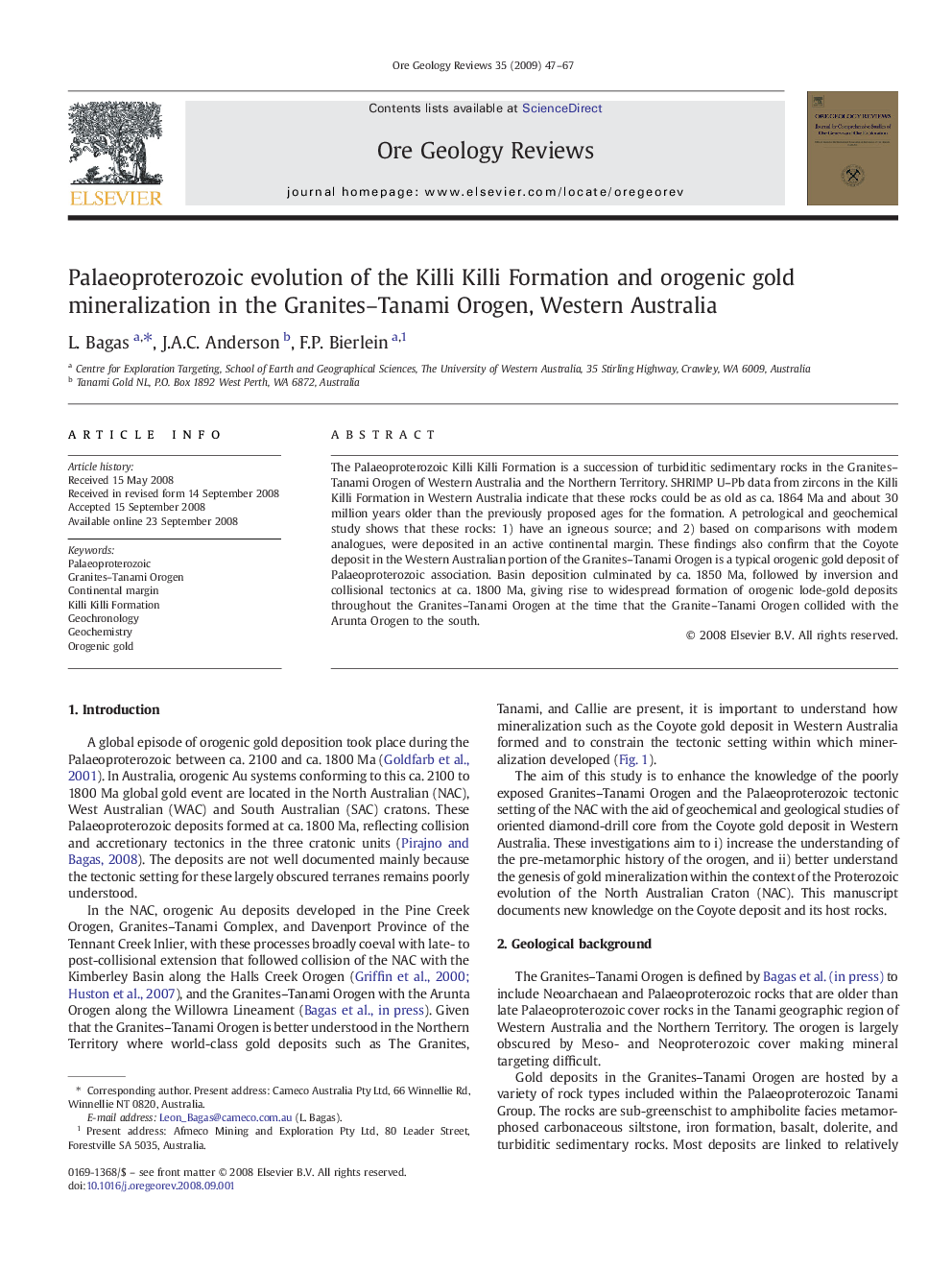| Article ID | Journal | Published Year | Pages | File Type |
|---|---|---|---|---|
| 4697937 | Ore Geology Reviews | 2009 | 21 Pages |
The Palaeoproterozoic Killi Killi Formation is a succession of turbiditic sedimentary rocks in the Granites–Tanami Orogen of Western Australia and the Northern Territory. SHRIMP U–Pb data from zircons in the Killi Killi Formation in Western Australia indicate that these rocks could be as old as ca. 1864 Ma and about 30 million years older than the previously proposed ages for the formation. A petrological and geochemical study shows that these rocks: 1) have an igneous source; and 2) based on comparisons with modern analogues, were deposited in an active continental margin. These findings also confirm that the Coyote deposit in the Western Australian portion of the Granites–Tanami Orogen is a typical orogenic gold deposit of Palaeoproterozoic association. Basin deposition culminated by ca. 1850 Ma, followed by inversion and collisional tectonics at ca. 1800 Ma, giving rise to widespread formation of orogenic lode-gold deposits throughout the Granites–Tanami Orogen at the time that the Granite–Tanami Orogen collided with the Arunta Orogen to the south.
